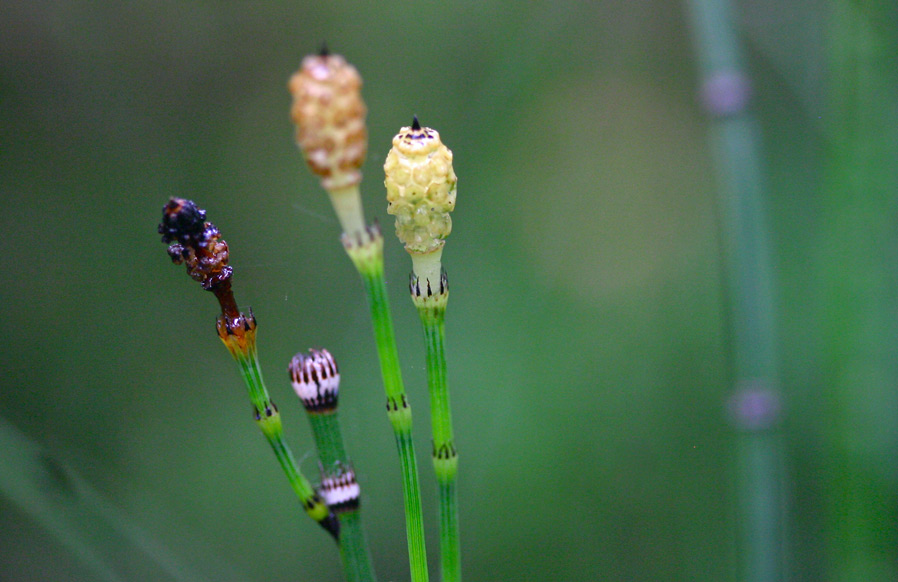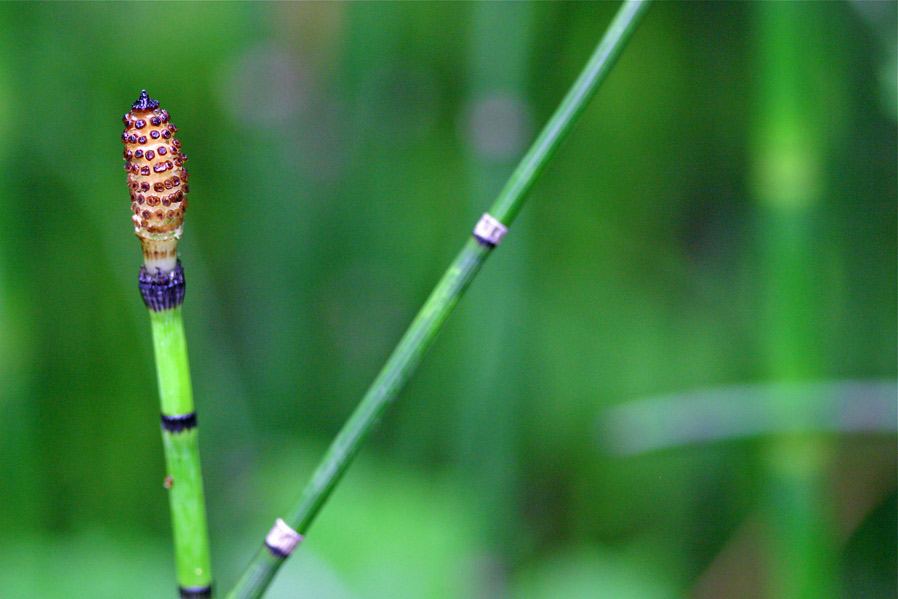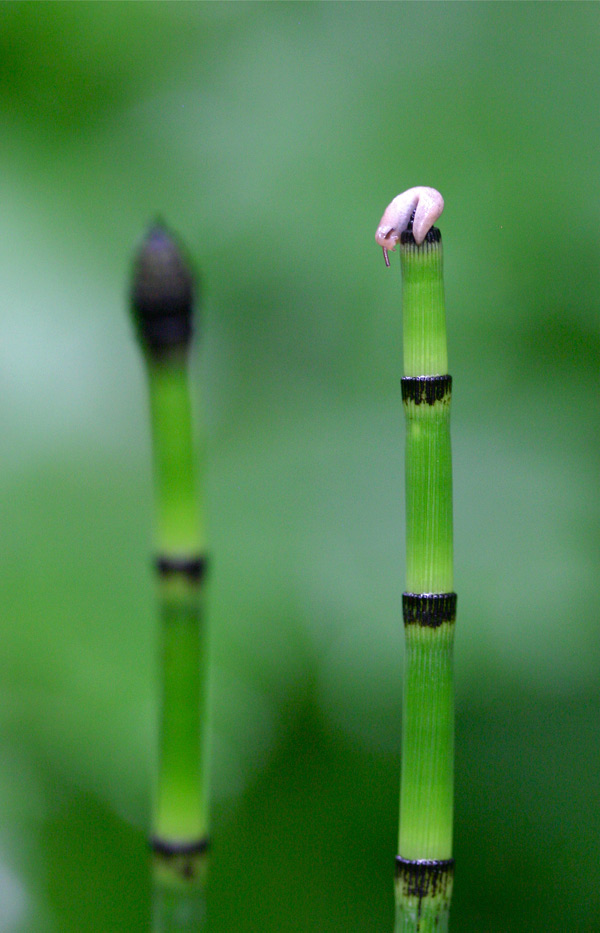Snakegrass, otherwise known to many as horsetail (Equisetum hymale), is an ancient non-flowering plant. © BCP 2010
Wow. Out with my camera in my backyard after the rain again, and look at the strange stuff I found!
I knew we had what the kids called snakegrass on our slope heading towards the swamp, but I have to admit, for some reason I had never looked at it that closely.
Gently pushing aside the myriad maple and beech seedlings that are quickly turning into saplings, and making my way through the Triffid-like understory of purple-flowering raspberry bushes (click here to see that post), protecting my camera from the dripping foliage, I made my way into the spreading stand of snakegrass to give it a better look.
An invertebrate something or other sits atop a stalk of Equisetum in my backyard after the rain. © BCP 2010
The first thing I noticed was that there were some intriguing invertebrates making their home on the tips of some of the stalks. Lots of snails, and some critters that looks like the wormy part of the snail. (At this point, don’t know what, exactly, they are.)
Leaving the naked pink wormy creatures aside, a really close look at the tips of the snakegrass nearly made my eyes bug out. At the tips of the stalks are a veritable garden of cone-like structures — in diferent colours and shapes. The look like something Alice might have seen when she fell down the rabbit hole. Curiouser and curiouser!
I had no clue about this abundant vegetation growing so luxuriously in my backyard, so I let my fingers do the walking through wikipedia. This strange plant is actually Equisetum hyemale, an ancient non-flowering plant most commonly called horsetail. (It’s scientific name derives from the Latin for horse, equus, and the Latin for bristle, seta.)
When I say ancient, it’s no hyperbole. Here’s wiki on the subject:
“Equisetum is a “living fossil“, as it is the only known genus of the entire class Equisetopsida, which for over one hundred million years was very diverse and dominated the understory of latePaleozoic forests. Some Equisetopsida were large trees reaching to 30 meters tall…” (Read the rest of the Wikipedia entry here.)
The most fascinating bit, I think, is that these plants are non-flowering. They spread via spores and botanists now consider them to be closely related to ferns.
The extremely odd, cone-like structures at the tips of some of the upright green stalks are actually spore-producing bodies called strobili. The spores are borne under sporangiophores in these strobili.
Another common name for Equisetum is scouring rush. Before there was steel wool, or Maytags, for that matter, these rushes were dried and used for scouring, or cleaning, dirty pots. Seems the stiff stems contain silicates that give them a rough texture. They have even been used as a kind of sandpaper to smooth wood. (Try that the next time you’re caught in the woods with a wood-working project to finish and no medium sandpaper around.)
Blessed with towering, several-hundred-year-old trees that create a forest canopy over my backyard, I am further blessed with a living aviary. I consequently spend most of my time out in the yard looking up, trying to catch a glimpse of my feathered friends through the dense foliage.
But on this rainy day, the birds were hiding out somewhere, undoubtedly waiting for the torrent to slacken before going out to hunt for their next meal. Without much of a reason to look up, I looked down to see what I could see. It was a look that paid off.
Seems like a lesson there for me, eh?






1 comment